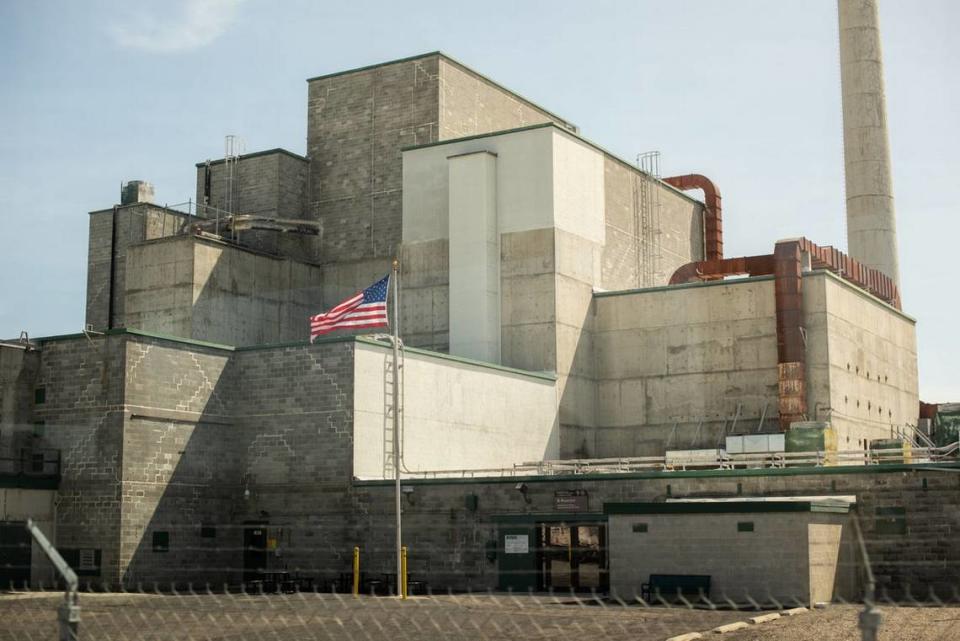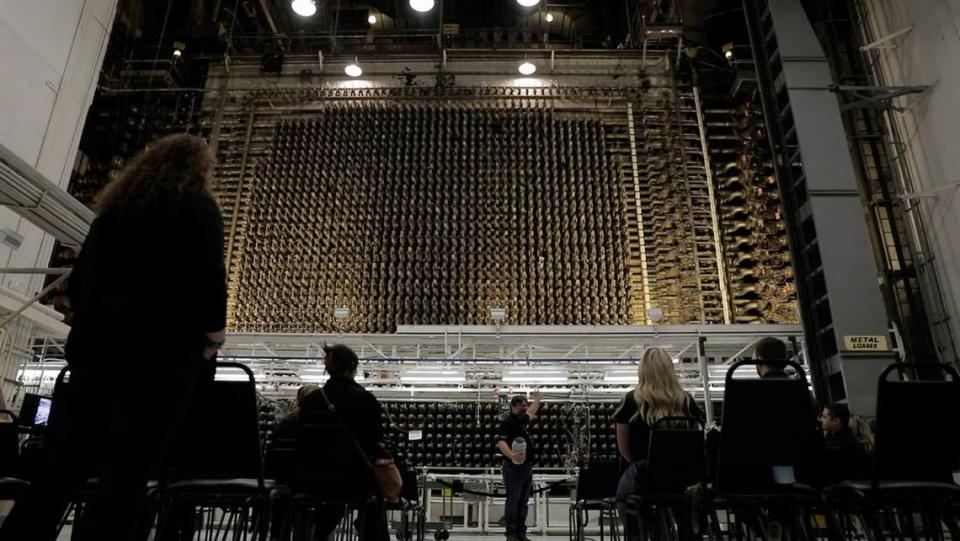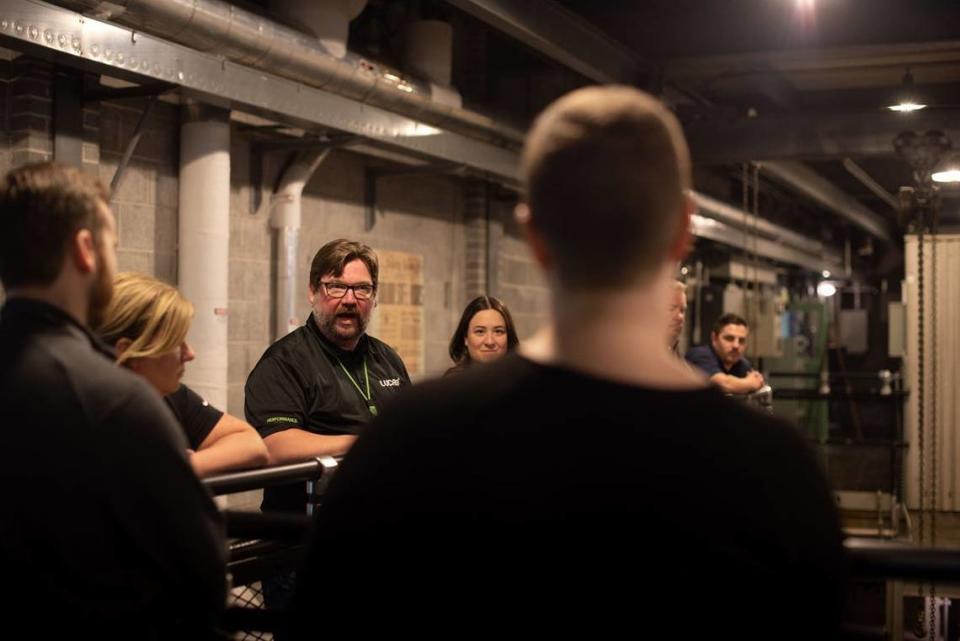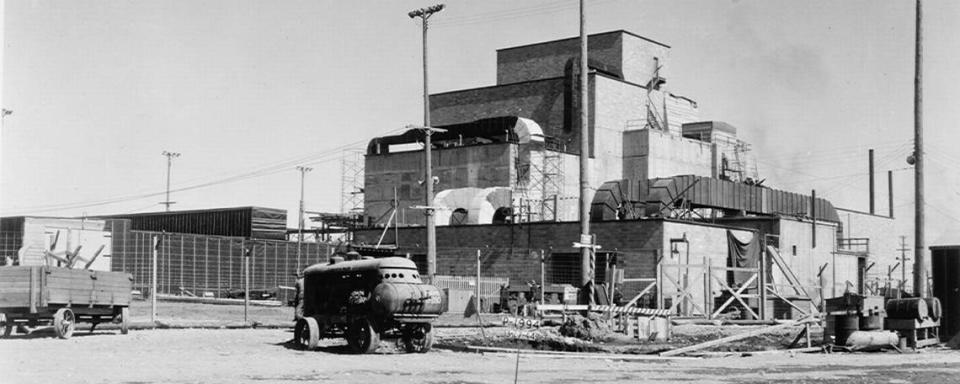Free tours of B Reactor have never been more popular. See it before the 2-year shutdown
After a blockbuster start to the 2024 tour season for Hanford’s historic B Reactor, the Department of Energy has agreed to extend the season through October rather than shutting down for repairs and preservation work this year.
The popularity of touring the world’s first full-scale nuclear reactor at the Hanford site in Eastern Washington, appears to be a combination of the release of the Oscar-winning film “Oppenheimer” and a fear of missing out.
The reactor is expected to close to tours for at least the next two years to replace its roof and make other repairs and improvements to the 80-year-old reactor building.
But at the request of Visit Tri-Cities, and with the support of area leaders, the Department of Energy has agreed to keep the reactor open for through October to complete the 2024 tour season.
The reactor is part of the Manhattan Project National Historical Park at Hanford but continues to be owned by DOE, which provides the tours.
Registration will open at noon Wednesday, July 3, for all tours from August through October.

All tours for the month of July, which officials thought might be the end of this season, have already been reserved. It is the first time that has happened since tours began in 2009, said Colleen French, DOE program manager for the Manhattan Project National Historical Park at Hanford.
About twice as many people have visited the reactor this year as the number that visited by the same time last year, French said.
“This bodes very well for the community’s ability to capitalize on the economics of having a national park in its backyard,” French said.
Visitors have come so far this year from 38 countries and 48 states — all but Maine and Vermont, according to information visitors volunteer on feedback forms.
It’s also a popular trip for Washington residents, with visitors from 187 cities in Washington, representing 36 of the state’s 39 counties, so far in 2024, French said.
“We have something they want to see,” said Kevin Lewis, president of Visit Tri-Cities.
‘Hush’ at B Reactor face
B Reactor changed the world, ushering in the atomic age.
Construction started on the reactor in June 1943, less than a year after scientists showed that a self-sustaining nuclear chain reactor was possible at Chicago Pile-1 beneath the bleachers of the University of Chicago.
The world had been at war for nearly four years, and the nation and its allies were in a race to develop an atomic weapon before Nazi Germany.

There were no precise construction blue prints and workers on the top secret project did not know what they were building, but B Reactor was completed and went critical in September 1944.
The plutonium produced at B Reactor powered the first man-made atomic explosion, the Trinity test, in the New Mexico desert in July 1945 and weeks later the atomic bomb dropped on Nagasaki, Japan, helping end World War II.
Today the reactor looks much as it did during the last days of World War II.
“There is that amazing moment when you walk into the front face of the reactor and a hush falls over the crowd and they learn about the significance of what they are looking at,” French said. “You are standing face to face with history.”
Another highlight of the tour is the control room where visitors can sit in the chair that was the command post for monitoring the operations of the reactor with a constant eye on multiple gauges and graphs.
It gives a sense that real people were once operating the facility under intense pressure, French said.
Marketing national park site
Under Lewis’s leadership of Visit Tri-Cities under the last year and a half, marketing of history and science attractions have increased and have brought in the agency’s highest return on advertising investments.
The marketing campaign focuses not only on the unique story of B Reactor at the Manhattan Project National Historical Park, but other attractions such as the LIGO observatory on Hanford land and the Reach museum in Richland.
For every $1 spent on marketing science and history in the Tri-Cities, $123 comes back into the community, Lewis said.
Just in May visitors that had interacted with Visit Tri-Cities on science and technology attractions accounted for 6,476 hotel room nights in the Tri-Cities, Lewis said.

They spent $850,000 at hotels, plus more money for gas, for dining and for other entertainment, he said.
“Tourism is a real economic opportunity, bringing additional revenue into the community,” he said.
But it also adds to the vibrancy and lifestyle of the community, helping support and expand amenities that locals enjoy, such as entertainment, trails, golf courses and restaurants, he said.
Register for B Reactor tour
The free tours begin and end at the visitor center at 2000 Logston Blvd., Richland, Wash., and include 45-minute bus rides to and from the reactor. About two hours is spent at the reactor.
To register, go to manhattanprojectbreactor.hanford.gov starting at noon Wednesday, July 3. Those without internet access may contact the tour center at 2000 Logston Blvd., Richland, by calling 509-376-1647.
The free tours will be offered daily, except most Sundays, with tours starting at 8:30 a.m. and 11:45 a.m. Tours will be offered on all three days of the Labor Day weekend, and those seats are expected to be claimed quickly.
Only one tour had been offered on Mondays and Tuesdays, but DOE increased them to two this year to meet this season’s increased demand.

Visitors should dress for the weather. Just as when the reactor was operating, there is no air conditioning.
Visitors concerned that the reactor may be too hot for comfort, can call the tour center the day before to ask what temperature they can expect within the reactor.
If there are people who register and do not show up for a tour, people who come to the visitor’s center when tours are starting may get an unclaimed seat on the bus.


